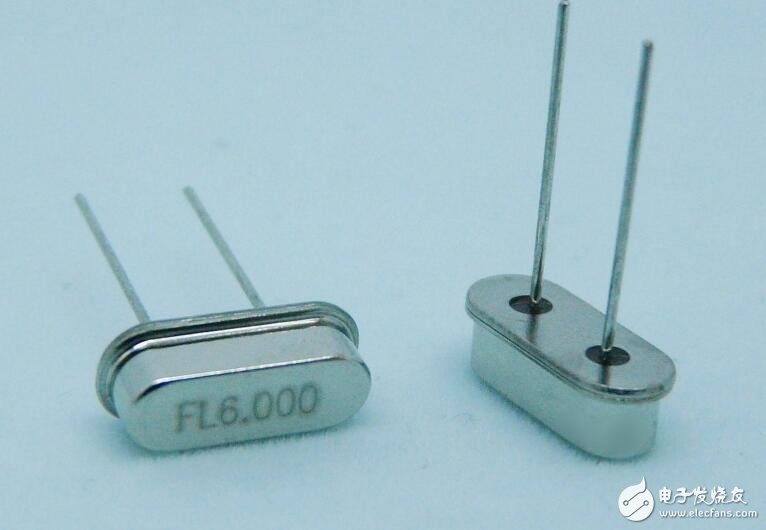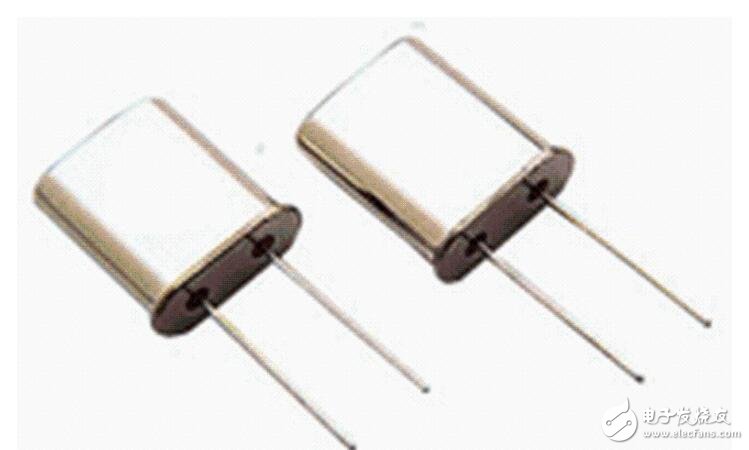The crystal oscillator is an abbreviation for crystal oscillator. The crystal oscillator refers to a slice (abbreviated as a wafer) from a quartz crystal at a certain azimuth angle, a quartz crystal resonator, which is simply referred to as a quartz crystal or a crystal, and a crystal oscillator; and a crystal element in which an IC constitutes an oscillation circuit is added inside the package is called Crystal oscillator. Its products are typically packaged in a metal case and are also available in glass, ceramic or plastic. The role of the crystal oscillator in the application, the clock source of the microcontroller can be divided into two categories: based on the mechanical resonant device clock source, such as crystal oscillator, ceramic resonant tank circuit; RC (resistance, capacitor) oscillator. One is the Pierce oscillator configuration for crystal and ceramic resonant tanks. The other is a simple discrete RC oscillator. Oscillator based on crystal and ceramic resonant tanks typically provides very high initial accuracy and a low temperature coefficient. The RC oscillator can be started quickly and at a lower cost, but is typically less accurate over the entire temperature and operating supply voltage range and will vary from 5% to 50% of the nominal output frequency. However, its performance is affected by environmental conditions and circuit component selection. The component selection and board layout of the oscillator circuit must be taken seriously. When in use, the ceramic resonant tank and the corresponding load capacitance must be optimized for a specific logic family. A crystal with a high Q value is not sensitive to the choice of amplifier, but it is prone to frequency drift (and possibly even damage) during overdrive. Environmental factors that affect the operation of the oscillator are: electromagnetic interference (EMI), mechanical shock and shock, humidity and temperature. These factors increase the output frequency variation, increase instability, and in some cases, cause the oscillator to stop. Most of the above problems can be avoided by using the oscillator module. These modules come with an oscillator, provide a low-impedance square wave output, and are guaranteed to operate under certain conditions. The two most common types are crystal modules and integrated RC oscillators (silicon oscillators). The crystal module provides the same accuracy as a discrete crystal. Silicon oscillators are more accurate than discrete RC oscillators and, in most cases, provide comparable accuracy to ceramic resonant tanks. Power consumption also needs to be considered when selecting an oscillator. The power consumption of the discrete oscillator is mainly determined by the supply current of the feedback amplifier and the capacitance value inside the circuit. The CMOS amplifier power consumption is proportional to the operating frequency and can be expressed as the power dissipation capacitor value. For example, the power dissipation capacitor value of the HC04 inverter gate is 90pF. When operating at 4MHz, 5V power supply, it is equivalent to 1.8mA supply current. Coupled with a 20pF crystal load capacitor, the entire supply current is 2.2mA. Ceramic resonant tanks typically have large load capacitances and correspondingly require more current. In contrast, crystal modules typically require a supply current of 10 mA to 60 mA. The power supply current of a silicon oscillator depends on its type and function, ranging from a few microamps of low frequency (fixed) devices to a few milliamps of programmable devices. A low-power silicon oscillator, such as the MAX7375, requires less than 2mA to operate at 4MHz. Optimizing the clock source for a specific application requires a combination of factors such as accuracy, cost, power consumption, and environmental requirements. 1. A general-purpose crystal oscillator is used in various circuits to generate an oscillation frequency. 2. The clock pulse uses a quartz crystal resonator to cooperate with other components to generate a standard pulse signal, which is widely used in digital circuits. 3. The microprocessor uses a quartz crystal resonator. 4. CTVVTR uses a quartz crystal resonator. 5. Quartz crystal oscillator for watches. 1. Miniaturization, thinning and chipping: In order to meet the requirements of light, thin and short portable products represented by mobile phones, the package of quartz crystal oscillators is changed from a traditional bare metal casing to a plastic metal to a ceramic package. Devices such as the TCXO are 30 to 100 times smaller. The TCXO in SMD package is less than 2mm thick, and 5&TImes; 3mm size devices are available now. 2, high precision and high stability, the total accuracy of the uncompensated crystal oscillator can also reach ± ​​25ppm, the frequency stability of VCXO is generally ± 20 ~ 100ppm in the range of 10 ~ 7 ° C, and OCXO is in the same temperature range The frequency stability is generally ±0.0001 to 5 ppm, and the VCXO is controlled to be less than ±25 ppm. 3, low noise, high frequency, in the GPS communication system is not allowed to tremble, phase noise is an important parameter to characterize the oscillator frequency jitter. The phase noise performance of mainstream OCXO products has been greatly improved. Except for VCXO, other types of crystal oscillators have a maximum output frequency of less than 200MHz. For example, the UCV4 series voltage controlled oscillator for mobile phones such as GSM has a frequency of 650 to 1700 MHz, a power supply voltage of 2.2 to 3.3 V, and an operating current of 8 to 10 mA. 4, low power consumption, fast start, low voltage operation, low level drive and low current consumption has become a trend. The power supply voltage is typically 3.3V. Many TCXO and VCXO products have current losses of no more than 2 mA. The rapid start-up technology of quartz crystal oscillators has also made breakthroughs. For example, the VG-2320SC VCXO produced by Seiko of Japan has a frequency stabilization time of less than 4 ms under the condition of a range of ±0.1 ppm. The SMDTCXO produced by Tokyo Ceramics Co., Ltd. can reach 90% of the rated value after 4ms of oscillation start. OAK's 10 to 25 MHz OCXO products achieve a stability of ±0.01 ppm after 5 minutes of warm-up. Bestseller Vape,Rechargeable Vape Pen,Disposable Vaporizer,Disposable Electronic Cigarette Guangzhou Yunge Tianhong Electronic Technology Co., Ltd , https://www.e-cigarettesfactory.com


How to measure the crystal oscillator? How to use the multimeter to judge the quality of the crystal oscillator
First, what is the crystal oscillator